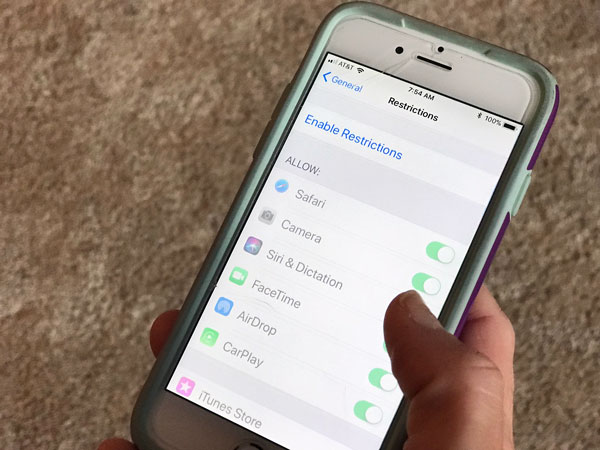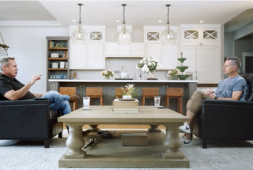
 A 44-year-old Los Angeles man was arrested last year for using the location information from people’s Facebook and Instagram photos to break into people’s home and steal their underwear.
A 44-year-old Los Angeles man was arrested last year for using the location information from people’s Facebook and Instagram photos to break into people’s home and steal their underwear.
Yeah. True story. There is no way I could think this up.
The man used several different methods. His favorite was hanging out in public places and waiting for people to “Check in” on Facebook. Once he found someone of interest, he would follow their posts and look for clues as to where they lived. He used this same method randomly finding people on Instagram and other social media apps. He simply looked for people who posted pictures with locations, then followed the GPS information to figure out where they lived. Then he would break into their house and steal their underwear… sometimes just feet away from where they were sleeping.
Creepy!
The only reason he was able to do this was because these people didn’t make use of their Privacy Settings.
Engaging Teens about Social Media Safety
I always find it a delicate procedure engaging teenagers about their use of social media. Teens don’t want to be told what to do by adults, especially with that device they love so much. So I always use true stories like the one above to perk their curiosity.
Whenever I tell that story in school assemblies, I can literally see young people pull out their phones right then and check their privacy settings. They can’t help but wonder, “Can some creepy guy find out where I live?”
In a world where the average young person gets their first smartphone at 10.3 years-old, Mom and Dad might want to make it a priority to have this conversation before handing them said device.
Here’s how I address teens about this important practice in my new book, The Teen’s Guide to Social Media & Mobile Devices:(Use this FREE excerpt from my book to engage your teens about this important subject!)
I Know Where You Live
Many of us choose to ignore Privacy Settings.
Ain’t nobody got time for that!
They’re like commercials. Just skip them. Even if a social media account asks us important questions, we often miss them. For example. Do you know that you have to be 13-years-old to have an Instagram account? If you already have an Instagram account, do you remember Insta asking you your age?
Most of us don’t remember or even pay attention to these details. We just click AGREE 27 times so we can begin posting pics. And some creepy, fat, naked guy staring at a glowing screen in his basement in Wisconsin loves that you didn’t pay attention to those details, because now he can look at the pictures you just posted of your slumber party with all your friends.
And if you don’t appreciate me bringing up the fact that this particular creepy guy is naked…
good!
I’m glad that makes you uncomfortable. It should. I promise you he’s real. Google
“sex offenders in my area”
and look at the map (don’t use a site that requires you to enter your email- a good “privacy” practice).
Privacy Settings are free tools that help you connect with the people you want, and keep out the people you don’t.
Take a few seconds and pull up the Privacy Settings on your devices and your social media accounts. You’ll find it worth your time. Here are some of the common safety practices to consider:
(Note: I can’t give you specifics of how to set your privacy settings for each device and app you use; they vary by device and are consistently updated. You’ll have to do a little bit of clicking around to discover them. Most apps have a “Settings” tab or dropdown that allows you to set your own controls of who sees you.)
Wise Privacy Practices:
1. Enable Privacy Settings
Whenever you download a new app, immediately enable the Privacy Settings. It might be one of those initial boring questions the device asks you. Pay attention. Those few seconds could save you a world of grief. And if you already have the app, just go back in and take a look at those settings now. And an important setting to consider is…
2. Friends only
Don’t let any random person ‘friend’ you or gawk at the pictures you just posted. Seriously consider only letting people you know look at your posts and have access to your information. So find a place in your Privacy Settings to adjust who sees your stuff. It’s good to choose just the people you have chosen as friends. If you choose friends of friends, then you’re letting the friends of your four hundred friends look at you. Ask yourself, “Are all four hundred of my friends making good choices about who they choose as friends?” Probably not. Chances are, at least one of your friends friended creepy basement guy with out even knowing it. Choosing “friends only” leaves the discretion to you.
3. Turn location services ALMOST completely off
“Location services” tell people where you are. This feature is pretty cool when you lose your phone. Then you can use features like Find My iPhone to figure out where you left it. But if you aren’t careful, then your location services will also tell that same creepy guy in the basement where you are. Trust me. You want him to stay in his basement.
So keep your location services on for your device overall, but then go into your individual apps and turn them each off. This is especially important on your phone since you carry it with you. So in Snapchat, for example, you might consider adjusting “who can see my location” under settings and choosing “Ghost Mode” or at least handpicking only select, trusted friends who will see you in Snap Maps.
Where can you adjust the locations settings on your devices? On the iPhone go into your settings and look for the Privacy Settings. Then look for Location Services. On my friend’s Android, he went to his phone’s settings, clicked the “General’ tab, and found a setting simply called “Location.” Again, it varies by device, but with a little clicking around you’ll find it. Again, I recommended my daughters keep theirs ON, but then scroll down to each app and turn them off individually. Some users don’t like this, because this prevents them from posting their location with their pic. If you must have this feature, decide if you’re responsible to remember to not post locations when you’re vulnerable, like when you’re studying late at a coffee shop and you post a picture of your new mug before calling it a night. Now the basement guy knows where you are and knows you’re going to your car soon. (Think about that one for a moment.)
You’ll have to consider these ramifications for every app. Maybe even ask the advice of someone you respect.
And remember, never post a location when you’re home. It only takes one picture to let everyone know where you live. That means if you use something like Facebook Places , don’t “check in” at home. Some people think they’re being sly by not mentioning it, but then they mention everywhere else that they “aren’t home.” You’d be surprised how many people take pictures getting ready, or even in their bathroom… and leave location turned on. Duh! People know that’s your own bathroom! It’s obviously not a Starbucks bathroom! Rule of thumb: never check in at home or post any pics with locations at home. (And maybe stop posting pics from your bathroom!)
If you’ve already sent posts from home with your location settings on, delete any of those posts… and lock your doors and windows.
4. No signing in with social media
Sometimes when you are signing up for something it will give you the option to sign in with social media. Avoid this. When you login with Facebook or Twitter, it often is giving this new entity access to all your friends, posts and information. If you absolutely feel like you must do this, then read the fine print. Are you allowing them access to your contacts and other data? Are your friends going to hate you for allowing Billy Bob’s Country Music Mix to start bothering them and asking them to subscribe to their music service?
Have you looked at your Privacy Settings?
Questions to Ponder:
-
-
- Over half of parents never talk with their kids about privacy settings. Why do you think this is?
- Have you ever given your information or access to your data and regretted it later?
- Did any of these recommended privacy practices make you think twice? Which ones?
- How will you set “who will see your stuff”?
- What might you need to adjust in your location controls? Why?
- Who is a trusted adult you can talk with about these kinds of choices? When will you connect with them next?
-
Something to Think About:
Privacy Settings might be a little inconvenient. So are seatbelts. And they both save lives.
Take a few moments and jump into your Privacy Settings today. Are these controls set in a way that keeps you and the others in your house safe?
Don’t make it easy for “basement guy.”
This excerpt is used by permission from Jonathan’s new book to teenagers, The Teen’s Guide to Social Media & Mobile Devices. Each chapter includes discussion questions to engage kids in conversation about what they read.
Jonathan McKee
Jonathan McKee is the author of over twenty books including the brand new The Guy's Guide to FOUR BATTLES Every Young Man Must Face; The Teen’s Guide to Social Media & Mobile Devices; If I Had a Parenting Do Over; and the Amazon Best Seller - The Guy's Guide to God, Girls and the Phone in Your Pocket. He speaks to parents and leaders worldwide, all while providing free resources for parents on his website TheSource4Parents.com. Jonathan, his wife Lori, and their three kids live in California.



